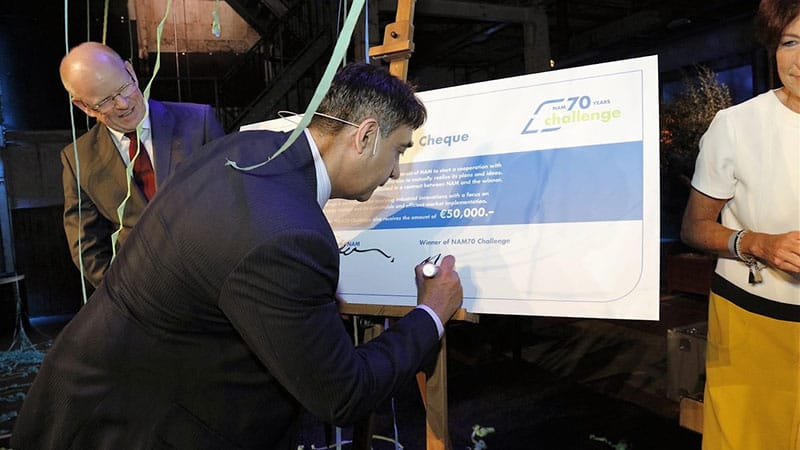UK's Storelectric brings compressed air storage to the Netherlands
Storelectric is to build a large-scale compressed air energy storage site in the Netherlands, after winning an international competition.


Storelectric received €50,000 for winning the NAM70 Challenge
The UK start-up, which proposes storing energy via compressed air in underground salt caverns, was recently crowned the winner of the NAM70 Challenge, run by Dutch energy company NAM.
As well as a €50,000 prize, Storelectric will now partner with NAM, which is jointly owned by Shell and Exxon, to investigate the idea of re-purposing oil and gas infrastructure for use in energy storage. They aim to build underground storage sites in the Netherlands and potentially the North Sea, to store energy from offshore wind farms and onshore solar power plants.
Compressed air energy storage (CAES) is not itself a new technology and has been operating at a site in Germany since 1978, and at a plant in Alabama in the US since 1991.
At CAES plants, excess electricity, for example from intermittent renewable energy sources, can be used to compress and store ambient air under pressure in an underground cavern. Then, when electricity is needed, such as when the wind is not blowing, the pressurised air can be heated and expanded in a turbine to generate electricity.
Register now to continue reading
Thanks for visiting The Engineer. You’ve now reached your monthly limit of news stories. Register for free to unlock unlimited access to all of our news coverage, as well as premium content including opinion, in-depth features and special reports.
Benefits of registering
-
In-depth insights and coverage of key emerging trends
-
Unrestricted access to special reports throughout the year
-
Daily technology news delivered straight to your inbox










Water Sector Talent Exodus Could Cripple The Sector
Maybe if things are essential for the running of a country and we want to pay a fair price we should be running these utilities on a not for profit...